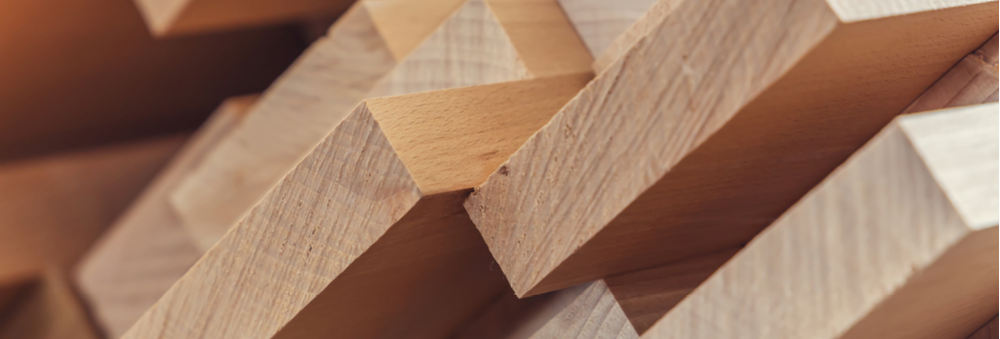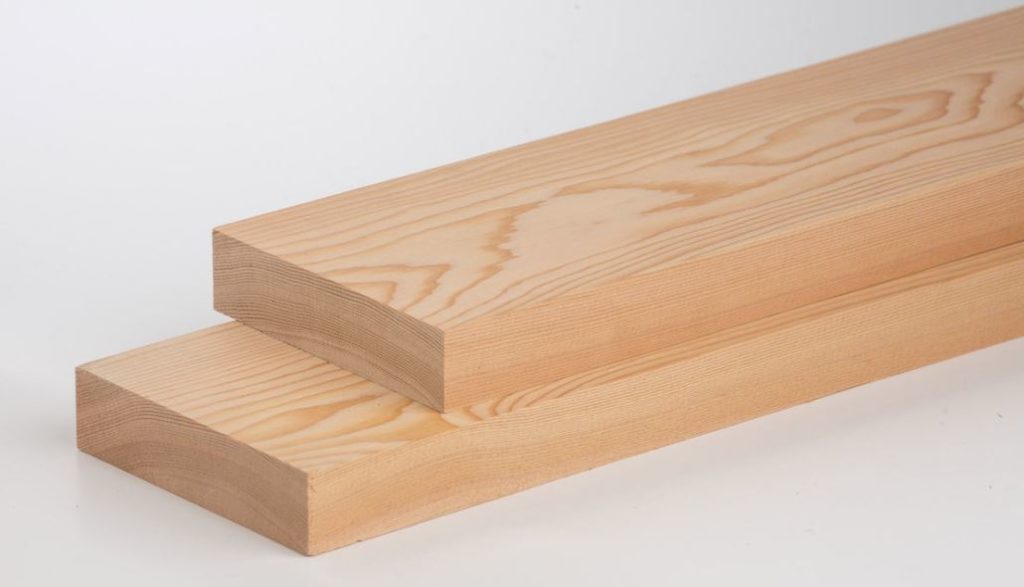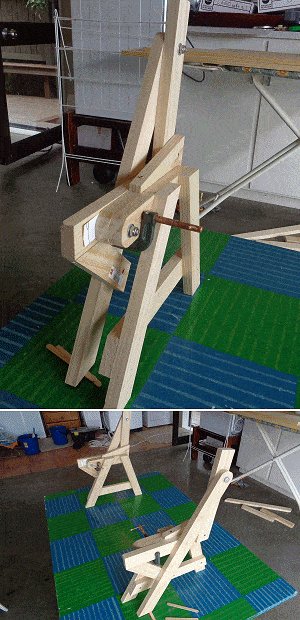Contents
Are you about to start a DIY woodworking project? Or do you want to be a professional woodworker yourself? The first thing to do is learn about the different types of wood for woodworking. Unbeknownst to the untrained eye, wood isn’t just distinguished by the look and cooler.
In addition to their origin, wood can also be distinguished by their characteristics and the type of product they are best for. Below, we’ve shared an in-depth guide into the types of wood for woodworking. So, the next time you want to build something, you will know exactly what type of wood you need.

What is Hardwood?
Hardwood refers to wood harvested from non-conifer trees that don’t produce cones or needles. Typically, the trees that produce hardwood grow in temperate and tropical forests. Some of the popular hardwood species include maple, oak, cherry, walnut, and mahogany. As the name suggests, most hardwood tree species produce wood that is hard.
However, not all hardwood will be stronger than softwood. As a beginner, when choosing wood for woodworking, it may sometimes be difficult to distinguish the different wood categories. But, knowing the characteristics or features to look out for makes this task a little easier. Here are some of the common characteristics that hardwood tree species share;
- They come from angiosperm trees that produce broad leaves and flowers
- Most species are deciduous
- They grow slower and have a more complex structure
List of Hardwoods
You can find a myriad of hardwoods in the market, particularly woodworking wood types. These include;
Cherry
A popular tree, cherry, is commonly used for furniture as it is easy to finish and stain. The wood is also quite strong and hard, which makes it great for furniture and architectural work. Furthermore, its heartwood has a rather reddish-brown color for an even better show.
However, you have to prepare to pay more as this is amongst the most important. Cherry hardwood is rarely available in home improvement stores. Thus, you may be better off purchasing it from a lumberjack.
Oak
A popular furniture wood, oak is amongst the hardest hardwoods. You can find over 60 varieties of different oak trees. Primarily, oak wood comes in white oak and red oak options. White oak features light beige to brown color, while red oak features a pinkish to reddish color. Notably, white oak is favored for its more attractive finish and moisture resistance to make it ideal for outdoor furniture.
However, red oak is also still a popular wood for making furniture. Due to their water resistance, oak wood is also used for making wine barrels and boats. On the other hand, their dense finish makes them excellent firewood. Oakwood is also commonly used for flooring.
Mahogany
Mahogany is quite easy to identify due to its distinctive reddish-brown to deep red tint finish. The wood features a straight grain and medium textures finish and is amongst the softest hardwood. Due to its distinct red finish, it requires minimal finishing, mostly a single oil coat.
Mahogany is usually used to make musical instruments such as pianos, although you can also use it for furniture making. But, mahogany isn’t grown in sustainable forests. Thus, it can be pretty expensive and difficult to source, typically through a lumberyard. This means that as a beginner, you probably want to refrain from using it.
Maple
Wood from maple trees is amongst the hardest and most stable wood for woodworking. You can find hard or soft maple wood in the market. However, most woodworkers prefer softwood as it is more forgiving on power tools. The wood’s fine, straight grain and stability make it an excellent option for furniture making and flooring. Still, it is quite an affordable wood compared to other hardwoods.
Other popular hardwood for woodwork includes poplar, birch, ash, beech, merbau, balsa, walnut, and teak. Palm and bamboo aren’t sourced from deciduous trees. Nonetheless, they are classified as hardwoods. Palm and bamboo are pretty versatile wood, allowing you to use them in more than 1,000 different items. You can use them for musical instruments, wicker furniture, baskets, and even surfboards.

What is Softwood?
Softwood refers to wood sourced from conifers. Their needle-like leaves and cones distinctly identify conifers. Softwood has a lower density compared to hardwood and is lighter in color. Unlike hardwood, softwood trees grow quicker and produce soft and easier to work with wood. Additionally, softwood is cheaper than hardwood. However, softwood isn’t always softer than hardwood.
You can still find some hardwood species that have a softer profile than some softwood species. For example, longleaf pine and Douglas fir feature a much harder profile compared to some hardwoods. On the other hand, balsa, a hardwood, is softer than most softwoods. Some of the popular types of softwood include pine and spruce. Here are some of the universal characteristics of softwood trees;
- They come from gymnosperm trees that produce needle-like leaves and cones
- They grow quicker
- They feature a lighter color
List of Softwood
Softwood can be sourced from a variety of tree species. While it features a light and soft profile, softwood caters to a range of applications. You can use softwood for anything from construction and furniture making to boats and flooring. Here are some of the common types of softwood;
Douglas fir
Douglas fir isn’t a real fir species but rather hemlock. This wood is sourced from an evergreen tree and is considered the world’s best timber-producing species. Due to its strength and hardness, Douglas fir makes perfect construction, flooring, and joinery wood. Paint and stains also adhere quite well to Douglas fir to make it an excellent wood for furniture making.
Cedar
Cedarwood is sourced from various subspecies and is the most readily available softwood in the market. Due to its wide availability, cedarwood is quite affordable and easy to find in any home improvement store. But, the most widely available option is western red cedar. Cedar has a reddish color and a straight grain with an aromatic scent.
This aromatic scent helps to keep off bugs and pets to make the wood ideal for large furniture pieces such as closets or chests. Its rot-resistant finish also makes it great for outdoor furniture. However, the natural aromatic smell makes the wood hypoallergenic. Thus, you should avoid using them on kitchen items or on furniture that will come in contact with your skin for long periods.
Pine
Pine is a commonly used and readily available softwood due to its quick growth, affordability, and sustainability. The wood is somewhat soft and relatively easy to work with. Pine trees come in different varieties, which give them different colors, including yellow and white. You can easily stain and paint pine wood. However, due to its delicate nature, it is favored for indoor furniture. You can only use it for outdoor furniture if you treat it.
Redwood
Redwood is relatively soft and features a reddish tint. The wood has a straight grain and is quite easy to cut and shape. You can easily find it at a modest price in any home improvement store with its relative abundance. It also features a moisture-resistant finish to make it perfect for outdoor furnishing. You can use it on patio furniture, decks, and arbors. You can also use redwood for indoor furniture such as cabinets and large tables.
Spruce
Spruce is just as soft as soft pine and features a straight grain with a light color. Due to its delicate nature, spruce is ideal for indoor furniture. However, some woodworkers use it for outdoor furniture after treating it. Spruce wood also boasts acoustic properties, which make it ideal for making musical instruments. You can also use it for interior framing and utility purposes.
Yew
Yew is available in a variety of subspecies, including European yew, Canadian yew, and Japanese yew. Like pine and cedar, yew is classified as closed pore softwood and is quite easy to work with; however, it is also one of the hardest softwoods. Nonetheless, it still boasts incredible elasticity to make it ideal for products such as bows.
You can also use yew for interior and outdoor furniture such as chairs and gate posts. However, yew produces relatively toxic fumes and aroma. Therefore, it is highly advised to wear a protective mask when working with it. Additionally, due to the unsafe fumes and aroma, it is advised to familiarize yourself with woodworking first before you start using the wood.
Other types of softwood come from conifer trees, such as hemlock and larch.
Conclusion
Ultimately, choosing the right types of wood for woodworking depends on your preferences. After all, wood for woodwork will not only affect its durability and quality. It also determines the look and aesthetics your DIY wood piece will give your living space. Budget is also a factor to consider.








